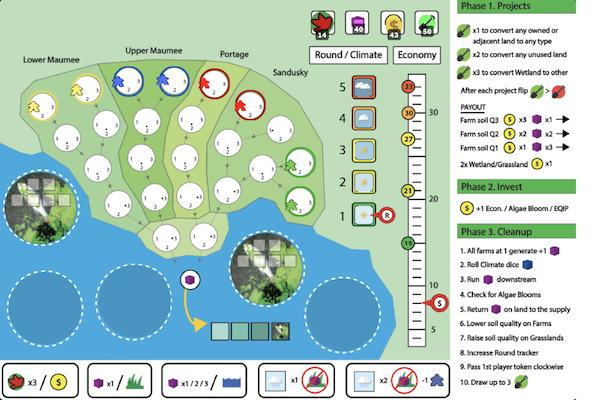Land Management Game Helps Uncover the Complexities of Land Use and Its Ecological Impacts Through Gameplay

In a bold fusion of AI and the creative realms of arts and humanities, The Ohio State University's Department of Design, led by the collaborative efforts of faculty members Scott Swearingen and Kyoung Lee Swearingen, and MFA candidate Thomas Ellsworth, have created a game known as the Land Management game. With interdisciplinary support spanning various departments across the campus, this visionary initiative aims to enrich understanding of land management strategies and the intricate crafting of environmental policies. They recently received a grant in recognition of their diligent efforts on this game.
The Land Management game, described as cooperative and rooted in endogenous learning principles, offers players a unique opportunity to engage with the complexities of land use and its ecological impacts through gameplay. Players learn by performing actions within the game, fostering a deeper understanding of the relationships between humans and their environments.
The idea for the game was sparked by a call for proposals connecting AI with arts and humanity issued a couple of years ago. Driven by a desire to explore the intersection of AI and gaming, the team behind the project sought to utilize machine learning to analyze vast amounts of data related to land use and ecological impact. Partnering with experts like Robyn S. Wilson from the School of Environmental and Natural Resources, the team embarked on a journey to develop a tool designed to augment land management education.
Thanks to a grant awarded to the project, the team has been able to foster collaborations across various disciplines at The Ohio State University, contributing to the development of this game. By connecting with faculty from departments such as Integrated Systems Engineering and Civil, Environmental, and Geodetic Engineering, the Department of Agriculture Environmental and Development Economics, as well as collaborating with organizations like the Ohio Department of Natural Resources, the project has gained valuable insights and support.
While the primary goal of the Land Management game is not instructional, it serves as a framework for risk analysis and fosters collaboration with future collaborators. The team has been working on the project since 2022 and is continuously refining it, with plans for further playtesting sessions in the pipeline.
While discussing with Scott Swearingen, one of the key figures behind the project, he expressed pride in the team's previous work, particularly highlighting the game "Wall Mounted Level." This cooperative mixed-reality game, designed to promote interaction among children with limited physical interactions, exemplifies the department's commitment to impactful and innovative game design.
When it comes to developing game concepts, the team relies on industry-standard software like Unity and Unreal Engine. However, they emphasize that the biggest challenge lies in organizing playtesting sessions and managing the intricacies of game design.
For students interested in game design at Ohio State, Dr. Swearingen recommends joining clubs he advises on like the Game Creation Club and the Board to Death Club, both of which offer opportunities to explore different facets of game design. Additionally, he encourages students to consider taking the Game Studies minor to further their skills and knowledge in the field.
